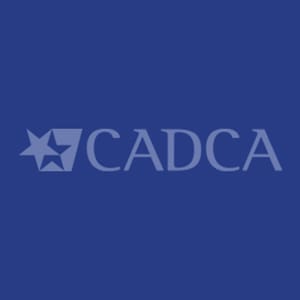“Do you recommend including youth as part of an adult coalition, or should a separate youth coalition be created when possible?”
No two communities are exactly alike. Each coalition must determine for themselves what strategies and structures make the most sense for the people they serve and what will be most effective according to their local conditions and problems. However, as coalitions navigate important decisions, CADCA offers technical assistance through its Coalition Development Support (CDS) team, comprised of experienced CADCA trainers and staff equipped to provide resources and guidance as needed.
One question that many communities consider is whether youth should be incorporated into their adult coalition, or if a separate youth coalition should be created instead. CDS Coach and CADCA Trainer, Rick Collins, weighed in and provided general insight for coalitions to keep in mind as they navigate this decision:
When determining the structure within your coalition, Rick acknowledged the benefits to each option and emphasized that the most important component, regardless of how a coalition decides to involve youth, is that youth are involved in some capacity and able to share their voices and perspective. As long as their participation is prioritized in some way, coalitions can be very successful under either structure.
What are the benefits to creating a youth coalition? Rick summarized that this option could lead to more avenues for youth to step into leadership roles and take more ownership over the activities and prevention strategies they implement. This embodies CADCA Youth Leadership’s “Youth-led, Adult-Guided” model, by providing an opportunity for youth to form their own voice, carve their own path and develop a sense of autonomy.
On the other hand, when youth are represented within adult coalitions, it may enable them to better understand the various aspects of coalition work, help adult members get a clearer picture of the youth perspective and allow for more collaboration among the various sectors. With this in mind, in some instances, it can be most effective to create a youth committee within the coalition to facilitate creating leadership opportunities as well as increase collaborative efforts on policy change and funding opportunities for youth.
Rick noted, however, that there are key considerations to be made when folding in youth to an adult coalition. First, a common obstacle can be scheduling conflicts. Meetings should take place after school hours, and it is not recommended to hold meetings without youth present. This could incorrectly send the signal that their input is not valued or is less valuable than the adult members.
Second, Rick emphasized that it is not enough to invite youth to sit in on a meeting; by simply checking a box, coalitions can run the risk of tokenizing their youth members. In order to create a space where young people feel comfortable participating, Rick recommended creating a balanced ratio of youth to adults, so that they feel comfortable participating and there is an equal power dynamic. Additionally, he added that the meetings should integrate a youth-focused process style that engages and empowers them to contribute fully.
In sum, this decision, like many others that coalitions have to make, should be determined by what the coalition thinks will best suit their specific community. For more tailored, specific guidance, schedule an appointment with CADCA’s CDS team here. CADCA members are also encouraged to continue this conversation and share their coalition’s experience and thoughts on the CADCA Community.



